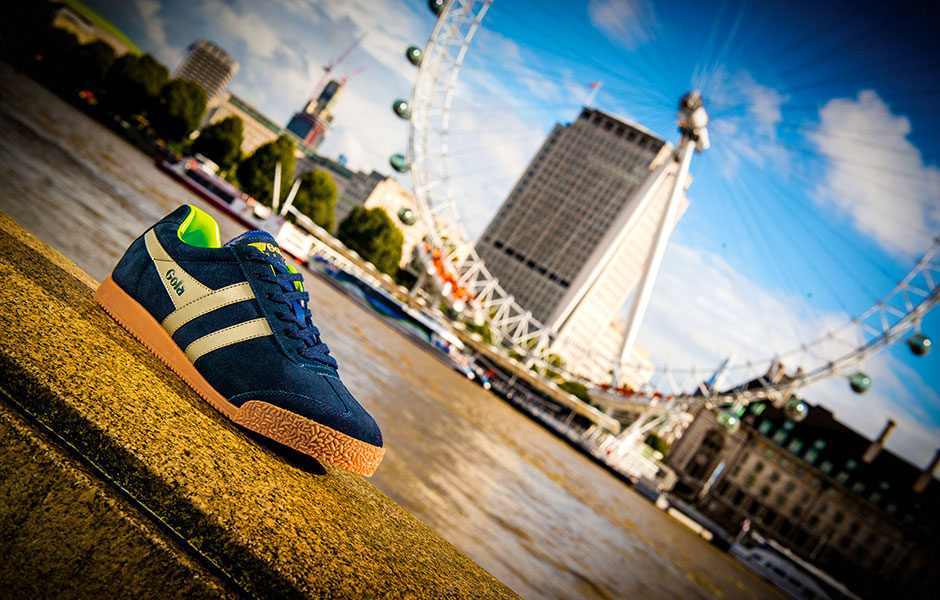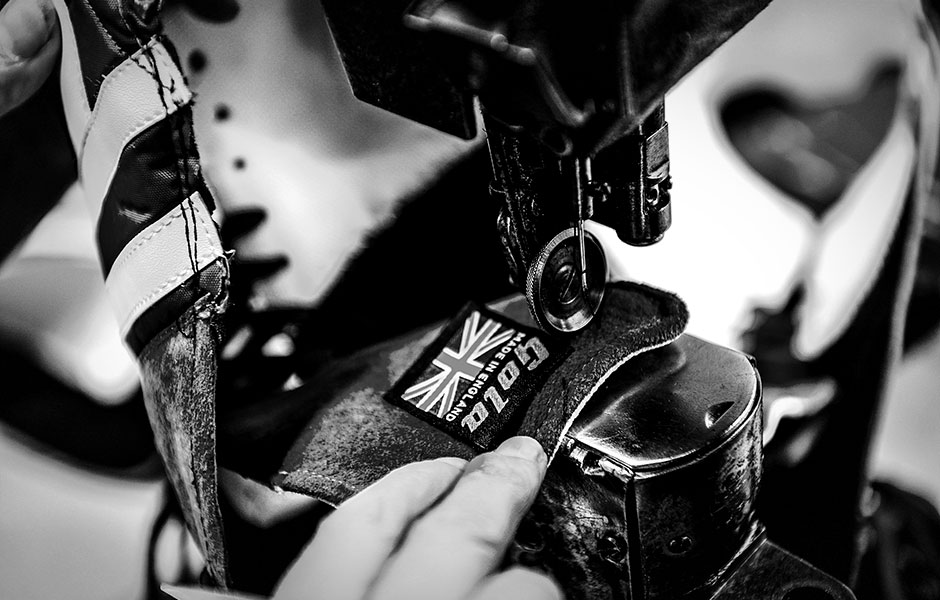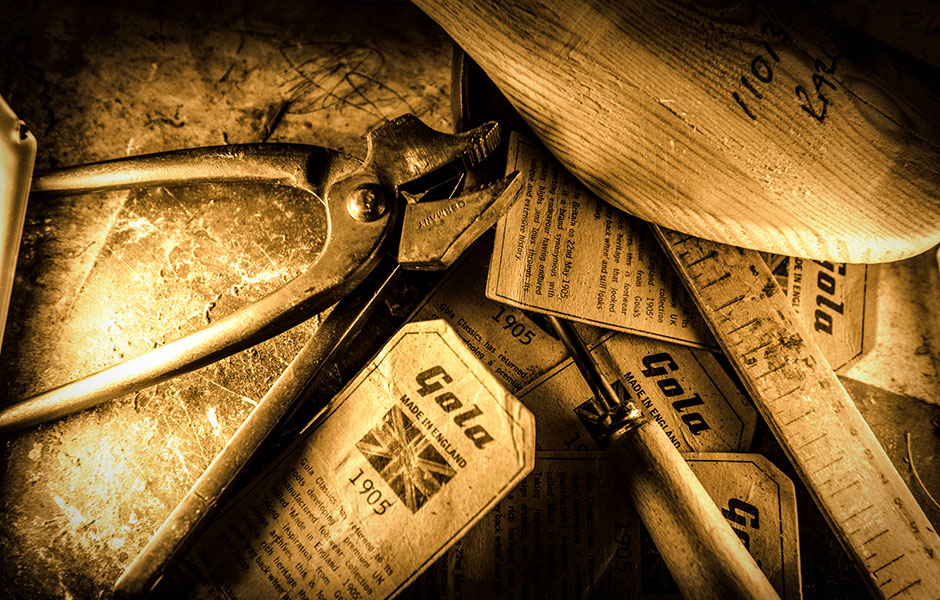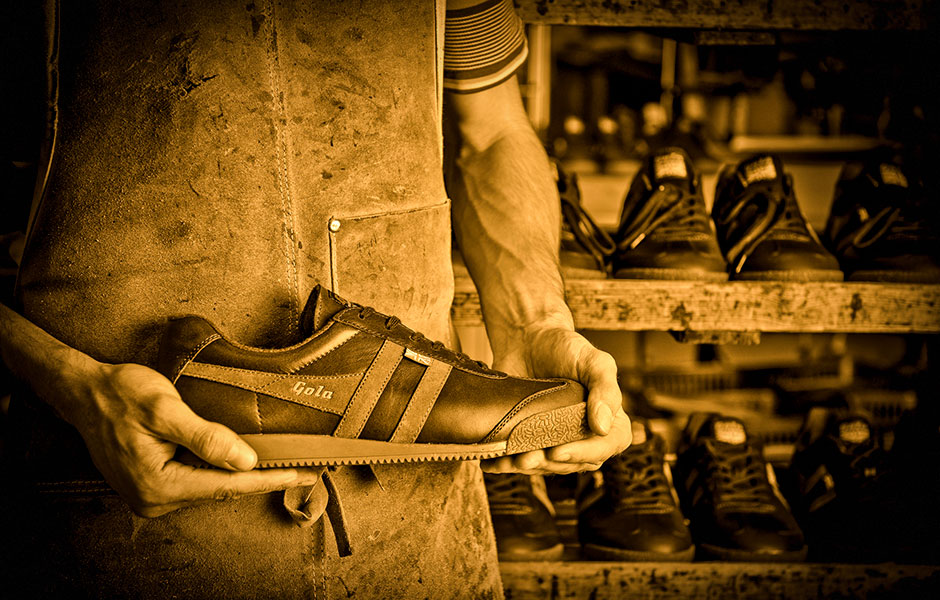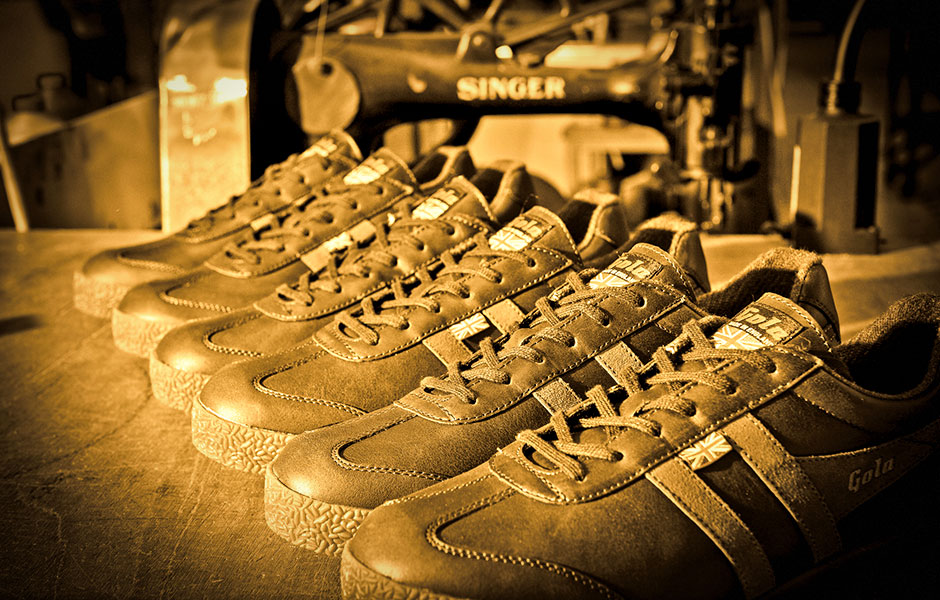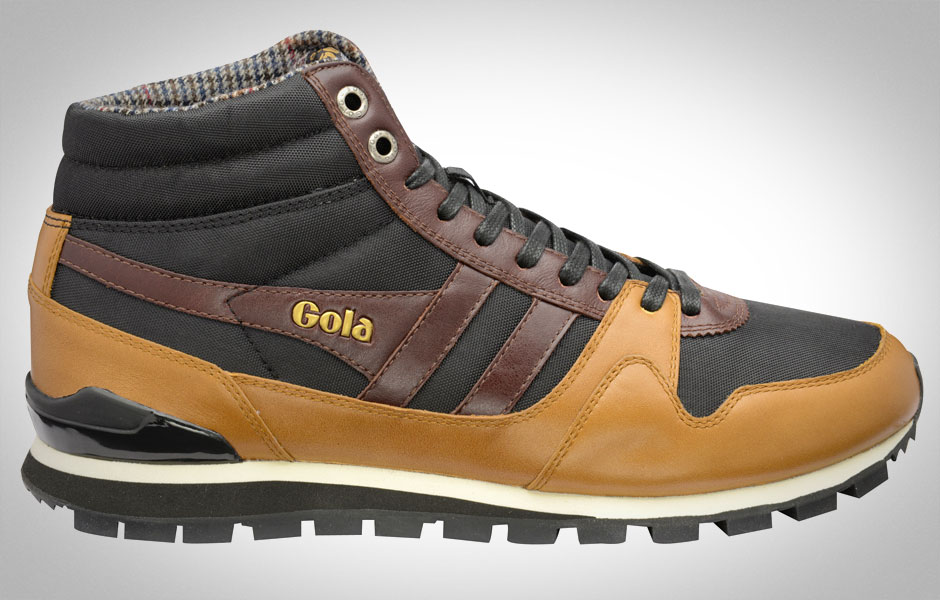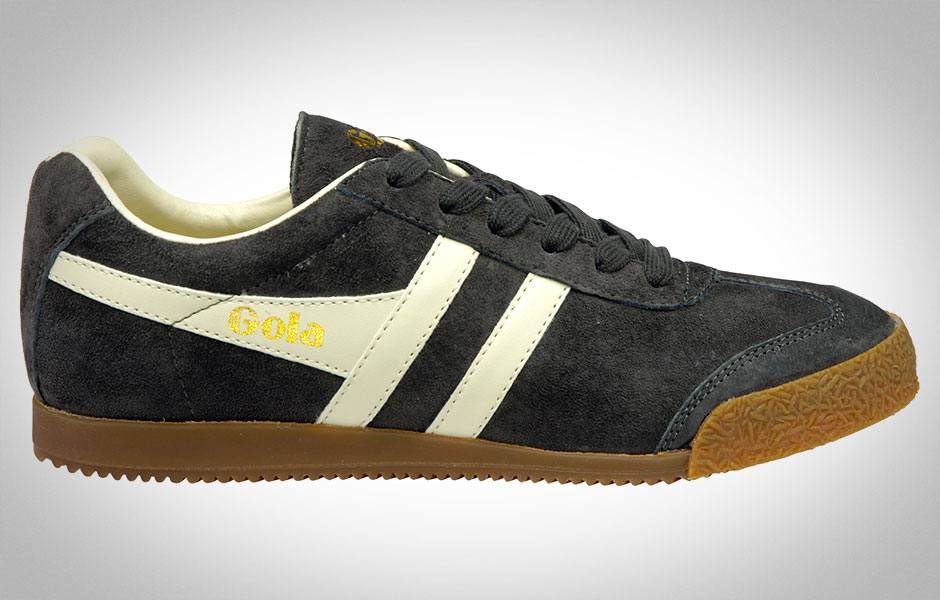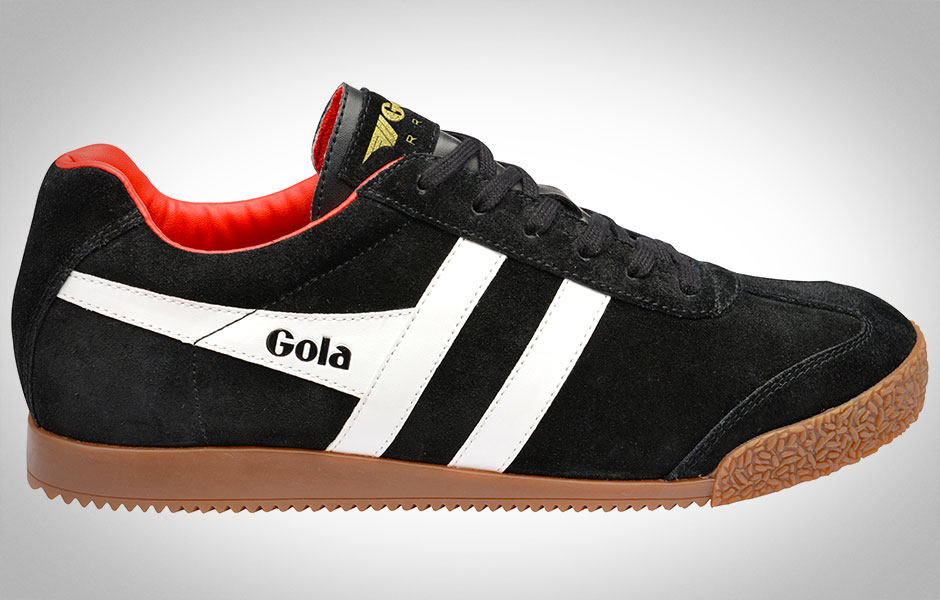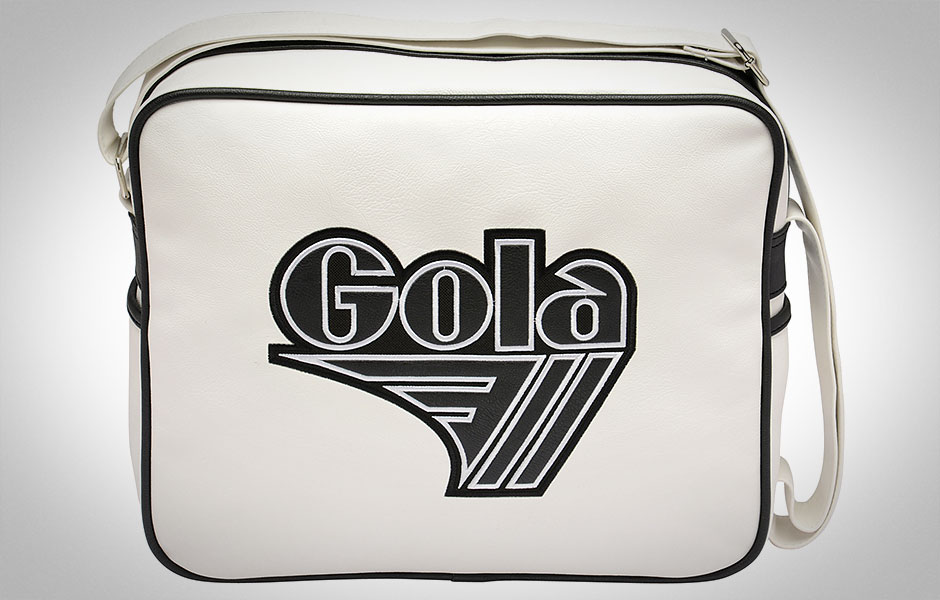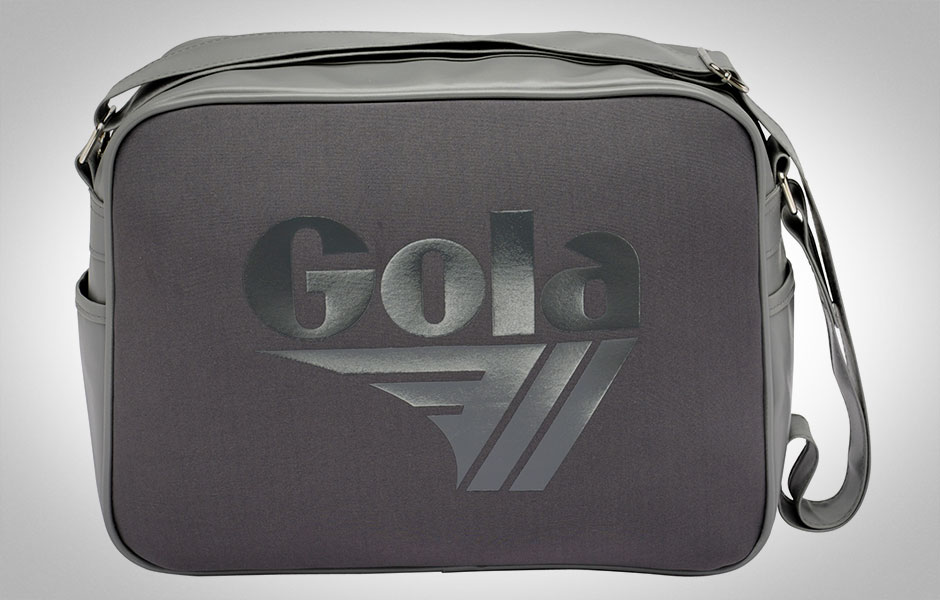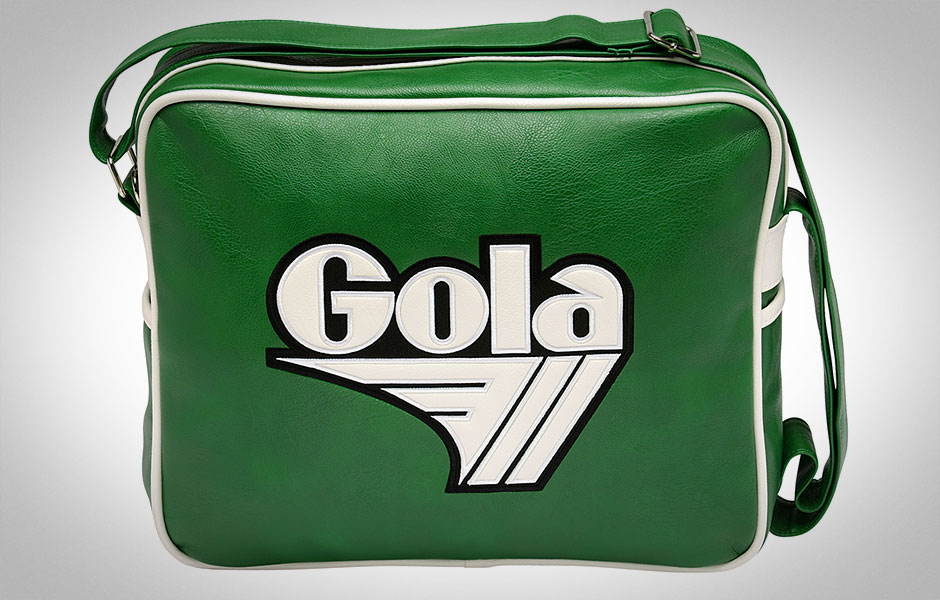- 1. Gola
- 2. Gola
- 3. Gola
- 4. Gola
- 5. Gola
- 6. Gola Harrier
- 7. Gola Ridgerunner
- 8. Gola Harrier
- 9. Gola Harrier
- 10. Gola Harrier
- 11. Gola
- 12. Gola
- 13. Gola
It’s a jubilee year for Gola. The British sneaker and accessories brand, which is headquartered just outside Manchester, turned 110 years old this year. Although no one is quite sure where the label got its name (one theory is that it is a corruption of the word “goal”), records do verify that it began as a manufacturer of football/soccer boots. Today Gola creates a fantastic collection of retro-inspired shoes and bags that are splendid alternatives for those who are swoosh-weary or fed up with having three stripes on their sneakers. Gola’s CEO, Tony Evans, recently spoke to me about the company’s big milestone, its history and current offerings.
Gola turned 110 years old this year. How are you marking the anniversary?
In various countries around the world we did different things. In the States we did a pop-store in Fred Segal in L.A. for five weeks. That was really cool because from our point of view because Fred Segal is globally recognized as one of the coolest stores. We also did a very small collection of Made in England sneakers in conjunction with a retailer in Barcelona called LimitEDitions. He is one of the top sneaker stores in Europe and everything he does is limited editions and collector’s items. We produced 110 pairs across three options: 40 pairs of one, 40 pairs of another and 30 pairs of another. That is due for launch on the 19th of December.
How has the brand evolved in all the years it has been around?
It has changed a lot. Obviously 110 years is a long amount of heritage in today’s market where there are a lot of bigger brands that are a far newer to the market. If you look back at Gola through the prewar days it produced products and footwear that were required at the time like the heavy original leather football or soccer boots that were used in the English leagues. And then in the ’60s and ’70s when training shoes came in with spiked shoes for athletes to run in and specific tennis products, Gola produced those models. We were probably one of the first brands at the time to develop specific products for specific sports.
Then as we fell into the turn of the millennium what we found is that with the heritage and back catalog that we’ve got it’s a great vehicle to look at that and bring them back. At the time the whole retro thing was just about to come back. We’ve got a lot of collateral with regard to back catalog and we’ve worked on that by bringing back running silhouettes, tennis silhouettes and the Harrier shoe, which first came out in 1968.
Gola was also the first training shoe brand. So from a heritage point of view that’s kind of priceless.
Who is the Gola customer today?
It’s a cool 18- to 30-year-old slightly anti-mainstream-brand person. We have a big student following. I think they’re very cool kids–both boys and girls–that don’t want to wear the same brands that everyone else is wearing. For us the Britishness is also a very important part of our portfolio and the heritage in combination is a great seller around the world. We are very proud of that.
How much of the current collection is devoted to archival styles?
Currently about 75 percent of it is heritage driven but with a modern, fashionable interpretation. At any one time it is probably between 60 and 80 percent and then we add on more out and out fashion product for guys and girls that is just an extension of that.
What are your current bestselling styles for men?
The style that has been a consistent bestseller is the Harrier. We also have an entry price point style called Comet, which tends to be the number one seller in the spring. There’s a style called Equipe that has been really good and there are some running options like a style called Boston.
How would you describe the ethos of Gola?
I think we’re a brand that sometimes doesn’t take itself too seriously. We’re a privately owned business and we’re not driven by share price. Sometimes I think with the bigger brands it’s all about money, money, money.
When were Gola’s golden years?
If you look back on it, it was the ’60s and the ’70s. There was less competition around in those days. Nike didn’t even come on to the market until 1971 so we predate Nike by 66 years.
How big is the Gola archive?
It’s vast. I honestly can’t say how much we’ve got but we tend to keep anything we’ve developed over the years that goes into production or in many cases doesn’t go into production. One of the things we are planning to do is an exhibition in New York in spring 2016 that is just Harrier and we are looking to potentially have 300 different versions of that shoe that we have done over the years.
